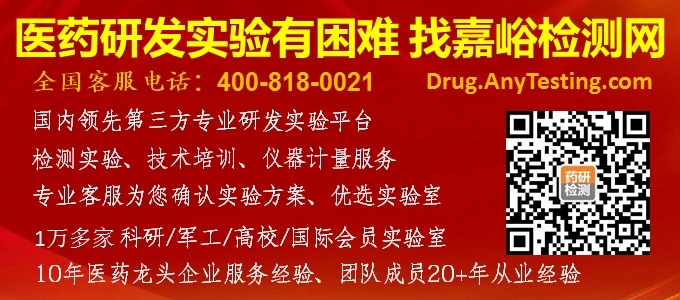您当前的位置:检测资讯 > 生产品管
嘉峪检测网 2022-10-29 05:49
第一问
Question:Do CGMPs require three successful process validation batches before a new active pharmaceutical ingredient (API) or a finished drug product is released for distribution?
Answer:No. Neither the CGMP regulations nor FDA policy specifies a minimum number of batches to validate a manufacturing process. The current industry guidance on APIs (see ICH Q7A for APIs) also does not specify a specific number of batches for process validation.
FDA recognizes that validating a manufacturing process, or a change to a process, cannot be reduced to so simplistic a formula as the completion of three successful full scale batches. The agency acknowledges that the idea of three validation batches has become prevalent, in part due to language in its own guidance documents. However, FDA is now clarifying current expectations on process validation. The 1987 Guideline of General Principles of Process Validation (译者注:实为 Guideline on General Principles of Process Validation) is currently being revised to address this issue. The emphasis for demonstrating validated processes is placed on the manufacturer’s process design and development studies in addition to its demonstration of reproducibility at scale, a goal that has always been expected.
However, a minimum number of conformance (a.k.a. validation) batches necessary to validate the manufacturing processes is not specified. The manufacturer is expected to have a sound rationale for its choices in this regard. The agency encourages the use of science based approaches to process validation.
In March 2004, FDA revised the Compliance Policy Guide (CPG) (Sec. 490.100) on Process Validation Requirements for Drug Products and Active Pharmaceutical Ingredients Subject to Pre-Market Approval. The CPG describes the concept that, after having identified and establishing control of all critical sources of variability, conformance batches are prepared to demonstrate that under normal conditions and operating parameters, the process results in the production of acceptable product. Successful completion of the initial conformance batches would normally be expected before commercial distribution begins, but some possible exceptions are described in the CPG. For example, although the CPG does not specifically mention concurrent validation for an API in short supply, the agency would consider the use of concurrent validation when it is necessary to address a true short-supply situation, and if the concurrent validation study conforms to the conditions identified in the CPG (See paragraph 4.a-c).
The conditions outlined in the CPG include expanded testing for each batch intended to address a short-supply situation. Expanded testing, conducted according to an established validation could provide added assurance that the batch meets all established and appropriate criteria before the API is used in the finished drug product. Additionally, confidence in the API manufacturing process may be gained by enhanced sampling (larger sample size representative of batch) and perhaps the testing of additional attributes. Validated analytical methods are needed for testing every batch, including validation batches. The agency would also expect the manufacturer to use a validation protocol which includes a review and final report after multiple batches are completed, even though the earlier batches may have been distributed or used in the finished drug product.
问:cGMP要求新原料药(API)或新制剂放行销售前,需要有3次成功的工艺验证批次吗?
答:没有。cGMP条例和FDA法规都未指定生产工艺验证的最少批次数。API现行的行业指南中(参见ICHQ7A)也未指定具体的工艺验证批次数。
FDA认为,验证一个生产工艺或变更生产工艺,不能简单公式化,仅依靠完成3次完整成功的批次。FDA当局承认3个验证批次的概念已流行开来,这在某种程序上是由于指导文件的语言表述问题。但是,FDA现在正在澄清对工艺验证现行的期望。当前正在修订1987版《工艺验证一般原则的指导方针》来解决这个问题。证实经过验证的工艺,其重点应放在生产商的工艺设计与开发研究上,另外还证实,一起期望实现大规模生产的可重现性这一目标。
但是,未规定生产工艺验证所需的最小批次数。在这点上,希望生产商对自己选定的批次数有可靠的论据。FDA当局鼓励使用科学的方法进行工艺验证。
2004年3月,FDA修订了《符合性政策指南》(CPG)(490.100部分)关于《制剂和原料药上市批准前工艺验证的规范》。CPG描述的理念:对所有关键的变异性来源进行识别并且进行控制后,应能生产出一致性批次,以此证明在正常的条件和操作参数下,按工艺能生产出合格的产品。上市前通常期望最终几批能顺利完成、符合要求,但是有一些可能的例外在CPG中也有描述。例如,尽管CPG中没有明确提到对供不应求的API进行同步验证,但是为了解决实际的缺货状况,FDA当局考虑在必要时使用同步验证以及同步验证研究是否符合CPG中认同的情况。
CPG中概述的情况包括:对解决短货情况的每个批次进行额外检验。额外检验,依据验证方案进行,可提供更多的保证:活性药物成分(API)用于制剂成品前,批次符合所有制定的适合的标准。此外,对API生产工艺的信任,可通过增加取样(增加有代表性的样本量)以及可能增加对额外属性的检验来获得。每批检验需要用验证过的分析方法,包括验证批次。FDA当局还期望生产商生产多个批次后做一份验证方案,包含回顾和最终报告,即使早期的批次可能已经销售或者用于成品生产了。
注:本问答摘自FDA官网 Q&A on CGMPs。
第二问
咨询内容:关于新增原辅料供应商,应该做小样检测、供应商审计、小试、工艺验证。如果做3批工艺验证,那么3批批物料对应3批工艺验证么?还是1批物料用来做3批工艺验证?
回复:3批批物料对应3批工艺验证。
注:本问答摘自国家药品监督管理局食品药品审核查验中心互动交流栏中的问题回复。
第三问
咨询内容:老师您好,冻干粉针剂品种车间同时购入两台同型号同容量冻干机,两台冻干机已分别进行设备验证包括性能验证,如果两台冻干机性能无明显差异,对同一个品种的同一批量生产工艺验证可否一台冻干机生产2批,另一台冻干机生产1批,共同完成3批工艺验证?
回复:你好,需要根据具体情况而定。
注:本问答摘自国家药品监督管理局食品药品审核查验中心互动交流栏中的问题回复。
第四问
咨询内容:老师你好,工艺验证过程中产品连续三批是指A产品必须不间断的生产三批。如果A产品三批生产过程中也插入了一批B产品是否可以。
回复:你好,一般是可以的。
注:本问答摘自国家药品监督管理局食品药品审核查验中心互动交流栏中的问题回复。
第五问
问:企业对影响药品制备因素的变更,应当进行验证或确认,如果物料包材的产地发生变化,需要进行3批产品的工艺验证?
答:如果包材的变化影响到关键工艺参数及产品质量,需要进行至少三批包装工艺验证,
点评:有时或者很多时候,包材供应商的变化(包括产地的变化)可能会引起包装工艺中一些参数的变化,如机速、热合温度(泡軍包装)变化,甚至可能会引起成型后包装的密闭性,所以通常需要进行三批产品的工艺验证。成品还应进行持续稳定性考察。
注:本问答摘自2010年版GMP疑难问题解答(国家食品药品监督管理局高级研修学院组织编写)。
第六问
问:每年生产1〜2批的产品如何做工艺验证?验证方法用什么?
答:工艺验证有前验证和同步验证,前验证需要预先完成连续三批后,才能进行正式生产,对于同步再验证,需要进行至少三批工艺验证,在确保设备性能、工艺、原辅料等不变的倩况下,允许每批生产结束后,按工艺验证方案的要求,整理好该批资料,如符合要求,放行该批次产品,直至累积三个批次后完成再验证报告。如前验证采用同步验证的方式,需要预先完成连续三批的工艺验证,才允许三批产品放行。
点评:前验证系指在任一工艺、设备或方法等正式使用前按照预定验证方案逬行的验证,其适用条件:如果没有充分的理由,任何工艺、过程、设备或物料必须进行前验证。
同步再验证系指在正常工艺运行的同时进行的验证,允许产品逐批放行。由于此类验证的风险较大,通常仅适用于生产工艺成熟的非无菌药品。欧盟GMP规定的适用条件:
1、生产批数有限;
2、不经常生产;
3、已验证过的工艺发生变更。
注:本问答摘自2010年版GMP疑难问题解答(国家食品药品监督管理局高级研修学院组织编写)。

来源:知药学社


